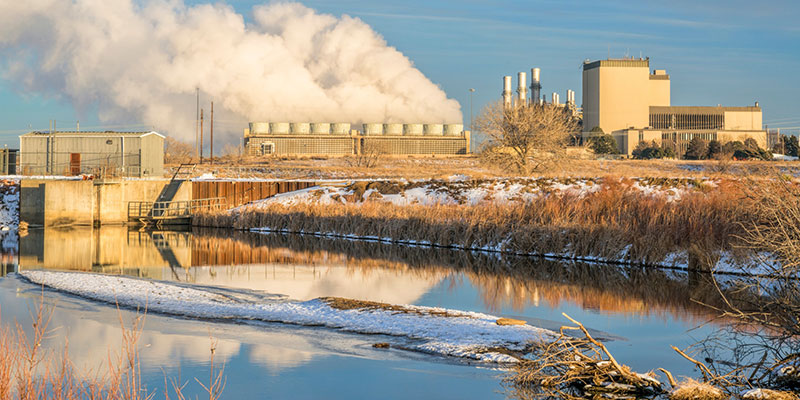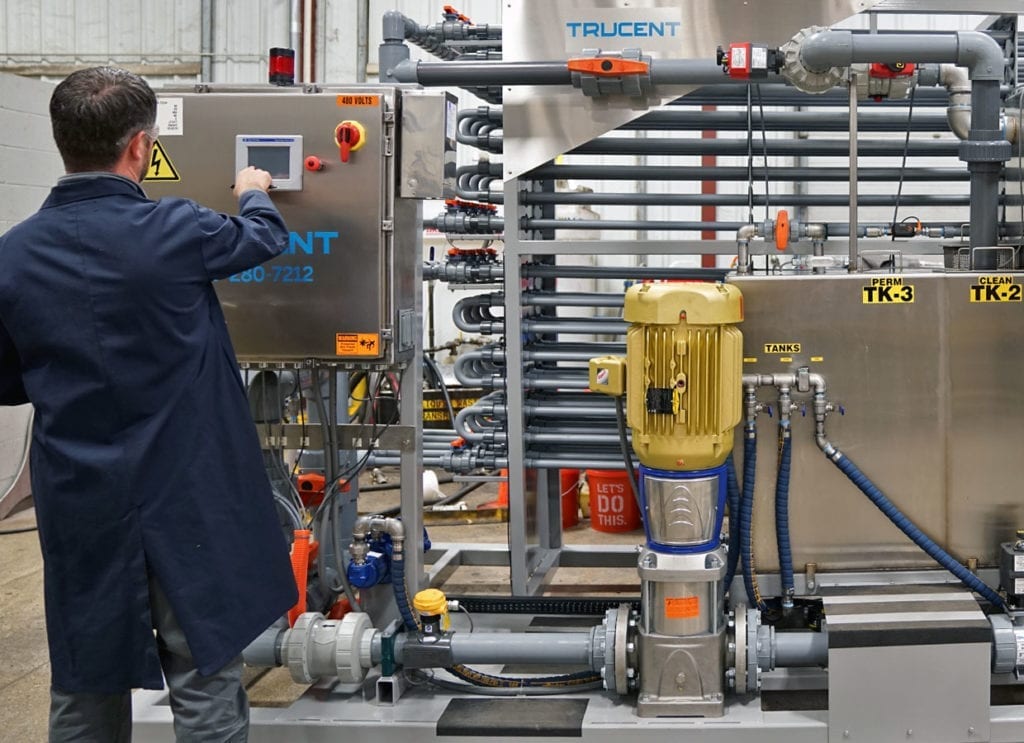Industrial Waste Water Treatment-- Eco-Friendly Solutions for Water Recycling
Wiki Article
Key Strategies in Hazardous Waste Water Therapy Processes
The therapy of industrial wastewater is an essential facet of environmental management, entailing a variety of methods developed to mitigate the influence of pollutants. From the fundamental physical methods that divide solids to the advanced chemical and organic processes that target specific toxins, each method plays an important role in attaining water high quality standards. Furthermore, developments in technologies such as membrane layer filtering and progressed oxidation processes supply ingenious remedies for improving treatment effectiveness. Comprehending exactly how these approaches adjoin and their implications for sustainability elevates crucial concerns regarding the future of wastewater management in industry.Physical Therapy Techniques
Exactly how properly can physical therapy methods deal with the intricacies of commercial wastewater? Physical therapy approaches play a critical function in the preliminary stages of wastewater management, focusing mainly on the removal of solids and big particulates. Methods such as purification, flotation protection, and sedimentation are crucial for reducing the concentration of suspended solids, thus improving the efficiency of subsequent treatment processes.Sedimentation involves the gravitational settling of solids, permitting for the separation of larger materials from the wastewater. This approach is especially effective in clearing up water prior to chemical or organic treatments.
Furthermore, flotation techniques, which utilize air bubbles to raise put on hold solids to the surface for elimination, are efficient in dealing with wastewater with high concentrations of fats, oils, and oils. In general, physical therapy methods offer as an essential very first action in the extensive management of industrial wastewater, guaranteeing that the lots on subsequent therapy stages is decreased and enhancing total treatment efficiency.
Chemical Treatment Strategies
While physical treatment methods prepared for efficient wastewater administration, chemical treatment strategies are crucial for resolving the a lot more complicated contaminants typically discovered in industrial effluents. These methods use different chemical agents to precipitate, neutralize, or oxidize dangerous substances, making sure a more comprehensive elimination of contaminants.
One usual method is coagulation and flocculation, where chemical coagulants such as light weight aluminum sulfate or ferric chloride are contributed to advertise the gathering of suspended fragments. This process improves solid-liquid splitting up, decreasing turbidity and boosting water quality. Furthermore, neutralization processes are utilized to change the pH of wastewater, making use of acids or bases to counteract acidic or alkaline streams, respectively.
Oxidation-reduction responses play an important duty in derogatory organic impurities and microorganisms. Chemical oxidants like chlorine, hydrogen, or ozone peroxide are used to break down intricate organic compounds, making them much less harmful or much more eco-friendly. Advanced oxidation procedures (AOPs) combine multiple oxidation techniques to improve pollutant elimination efficiency.
Organic Treatment Procedures
The efficiency of wastewater treatment is substantially enhanced by biological therapy procedures, which harness the all-natural metabolic tasks of microorganisms to disintegrate natural matter and eliminate toxins. Industrial Waste Water Treatment. These processes mostly entail anaerobic and aerobic digestion, each tailored for specific sorts of wastewaterAerobic treatment procedures make use of my review here oxygen to support microbial growth, promoting the breakdown of natural pollutants right into co2 and water. Typical techniques include turned on sludge systems, where oygenation storage tanks facilitate the blending of wastewater with bacteria, and dripping filters, which encourage biofilm growth on media surface areas.
Alternatively, anaerobic treatment processes take place in the lack of oxygen, making use of anaerobic bacteria to decay natural issue, causing biogas production, a renewable resource source. Anaerobic digesters are often utilized in commercial setups for this objective, properly minimizing the quantity of sludge while creating beneficial biogas.
The option of an organic therapy approach depends upon wastewater attributes, therapy objectives, and governing criteria. The combination of organic processes in wastewater therapy not only enhances contaminant elimination efficiency but likewise advertises sustainability by reducing chemical use and sustaining source healing.
Advanced Oxidation Processes

Common AOP strategies include Fenton's photocatalysis, reagent, and ozonation. Fenton's reagent, a mix of hydrogen peroxide and ferrous iron, catalyzes the formation of hydroxyl radicals, making it reliable for treating wastewater consisting of phenolic compounds and various other stubborn compounds.
AOPs provide numerous benefits, consisting of decreased sludge production and the ability to deal with wastewater with high concentrations of natural contaminants. Nonetheless, the application of AOPs needs cautious consideration of operational specifications and cost-effectiveness, guaranteeing that these sophisticated strategies are suitably integrated into existing wastewater therapy systems.
Membrane Layer Filtration Technologies

Microfiltration is efficient for getting rid of put on hold solids and bacteria, while ultrafiltration targets smaller sized natural molecules and viruses. Nanofiltration links the gap between ultrafiltration and reverse osmosis, efficiently eliminating divalent ions and organic substances. Reverse osmosis gives the highest possible degree of purification, utilized mainly for desalination and getting rid of mono-valent ions.
Membrane layer modern technologies provide many benefits, consisting of low power usage compared to conventional treatment methods, modular style for scalability, and the potential for water recovery and reuse. Challenges such as membrane layer fouling and the requirement for routine maintenance have to be resolved to make sure system efficacy. In general, membrane filtering innovations represent a vital element of modern industrial wastewater treatment techniques, promoting sustainability and source preservation in water monitoring.
Verdict
In final thought, commercial wastewater treatment uses a varied variety of techniques, including physical, chemical, biological, and advanced techniques. Proceeded developments in these techniques will additionally improve the effectiveness and effectiveness of wastewater informative post therapy processes in industrial setups.The therapy of industrial wastewater is a critical element of environmental monitoring, including a variety of methods created to alleviate the influence of contaminants.Just how efficiently can physical therapy techniques attend to the complexities of commercial wastewater?Advanced oxidation procedures (AOPs) stand for an advanced technique in industrial wastewater therapy, designed to effectively degrade organic pollutants that are typically immune to standard therapy methods (Industrial Waste Water Treatment).In verdict, commercial wastewater treatment employs a varied variety of methods, including physical, chemical, organic, and progressed approaches. Continued developments in these methods will certainly even more enhance the efficiency and efficiency of wastewater treatment procedures in commercial settings
Report this wiki page